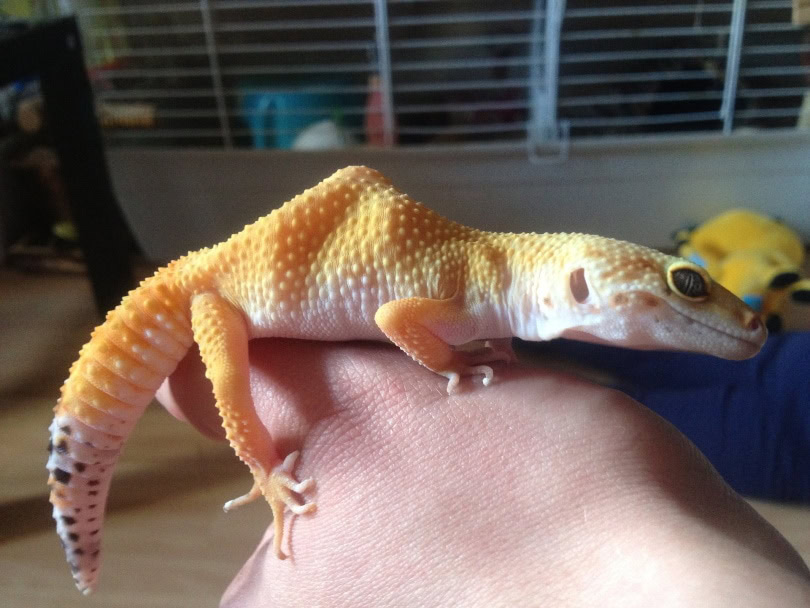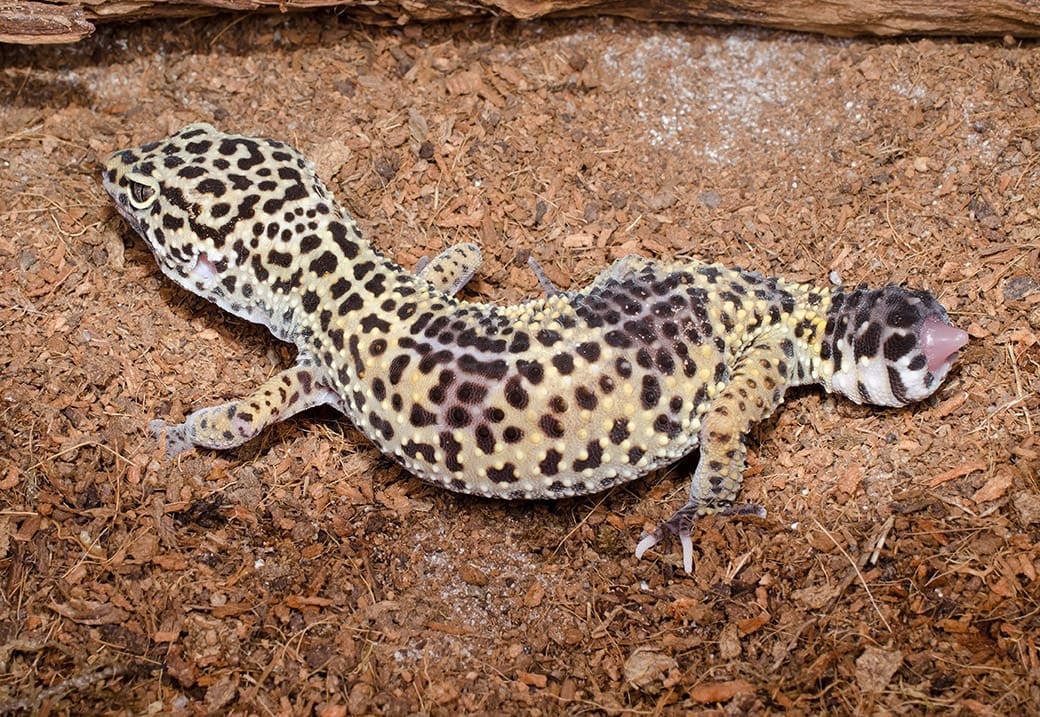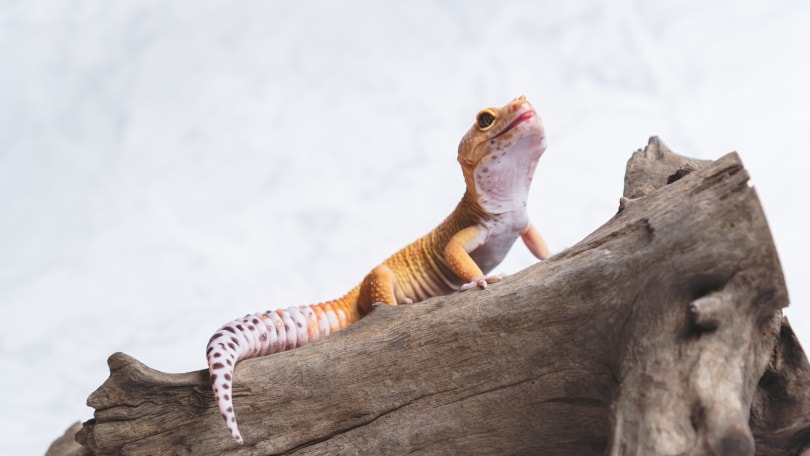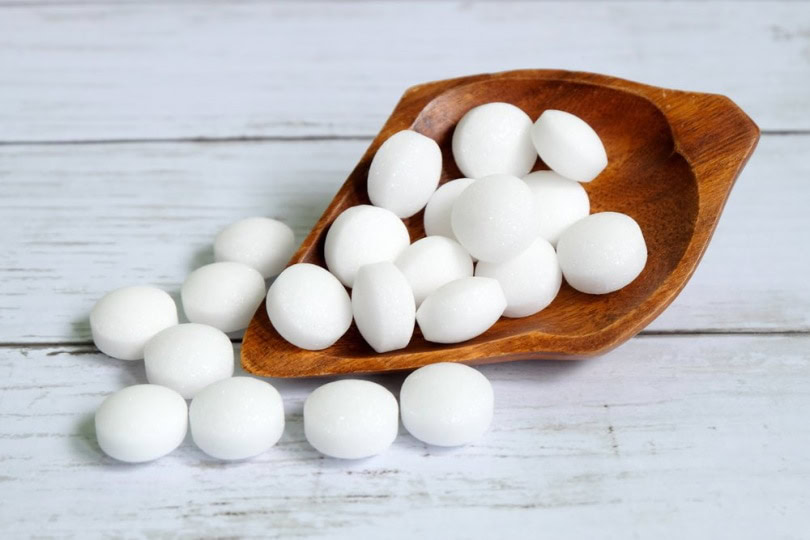Thanks to their striking appearance and active personalities, leopard geckos are among the most popular reptiles kept as pets. Because they are easy to care for, leopard geckos are suitable for even beginner reptile keepers.
If you’ve decided you want a leopard gecko, the next question is, where do you buy one? Depending on where you live, a chain pet store such as PetSmart might be your best option. But how much do leopard geckos cost at PetSmart? You can expect to pay $35–$40 per leopard gecko.
Keep reading to learn about the cost and availability of leopard geckos at PetSmart. Since you need a habitat to keep your new pet, we’ll also discuss the supplies you should purchase to create the perfect environment.

How Much Do Leopard Geckos Cost at PetSmart?

At PetSmart, leopard geckos generally cost $35–$40 per reptile. The store does not sell live animals online, so you must visit a PetSmart store to purchase your pet. Every store is different regarding the types of exotic pets available, so it’s a good idea to call your local PetSmart to see if they are currently carrying leopard geckos.
If you are looking for a specific size or gender of leopard gecko, those will also vary by store. Again, a quick phone call will save you a trip if your local store doesn’t have what you need. And, of course, also double-check that you’re not prohibited from owning a leopard gecko by state or local regulations or your landlord.
Preparing for Your New Leopard Gecko
Before bringing home your new leopard gecko, you’ll need a proper habitat for them. In the wild, leopard geckos are native to warm, dry climates full of rocks and scrub plants. Their captive habitat should be as similar as possible to the wild one.
Here are some basics about setting up your leopard gecko’s new enclosure, including specific items you’ll want to add to your shopping list.

Tank Setup
Leopard geckos should be kept in a glass terrarium or aquarium with a wire lid. One leopard gecko can be kept in a 10-gallon tank, but you’ll need a larger enclosure for two or more reptiles. The bottom of the tank should be covered in a safe substrate such as reptile carpet, newspaper, or ceramic tiles.
Within the terrarium, you’ll need to set up at least one basking spot and one hiding spot. A flat stone makes a nice basking area, while logs, artificial plants, and rocks can be used to create hiding and activity areas for the gecko. Complete the tank setup with a shallow water dish.
For safety reasons, don’t use a wire cage for your leopard gecko. Also, avoid sharp rocks, dusty substrates, and cedar or pine materials.
Lighting
Leopard geckos are nocturnal and don’t require bright, UV lighting. Depending on the season, red or black heat lamps can be used on a 12–14-hour light cycle. Automatic timers can help you maintain the right amount of light and darkness.

Temperature and Humidity
Leopard geckos need warmer and cooler regions in their tank. The temperature should be 77–90 degrees Fahrenheit, with the highest temperature at the basking spot. Heat lamps or heating pads may be used to maintain the right temperature. Two thermometers, one for each side of the tank, are recommended to monitor temperature.
An overall humidity of 30%–40% is ideal for a leopard gecko. If their tank is too damp, geckos may develop respiratory problems, while dry conditions can cause skin trouble. A hygrometer can help you accurately monitor and adjust the tank humidity.
Leopard geckos also need an extra humid area to retreat to when shedding their skin. A hiding box lined with a moist substrate like peat moss is a good option.
Food
Your new leopard gecko will need food and water in addition to a place to live. We already discussed an appropriate water bowl, which must be changed and cleaned out daily.
Leopard geckos eat only insects, and most will only eat live food. All live food should be gut-loaded and dusted with a calcium supplement before feeding your gecko. Crickets, roaches, or worms are all possible food sources for your leopard gecko.

Leopard Gecko Shopping List

Conclusion
Whether you buy your leopard gecko at PetSmart or from another source, make sure you also pick up all the supplies you need to keep your new pet safe and comfortable. As with any reptile, be sure you’ve prepared for the responsibility of caring for a leopard gecko before you bring one home.
Leopard geckos don’t require a lot of day-to-day care, but they do live surprisingly long lives, 6 to 10 years on average but possibly up to 20 years. This is definitely something to keep in mind as you consider purchasing a leopard gecko.
- Related Read: Hypo Leopard Gecko
Featured Image Credit: BANK lloyd LIGHT, Shutterstock










